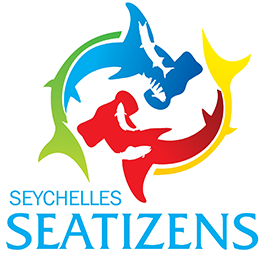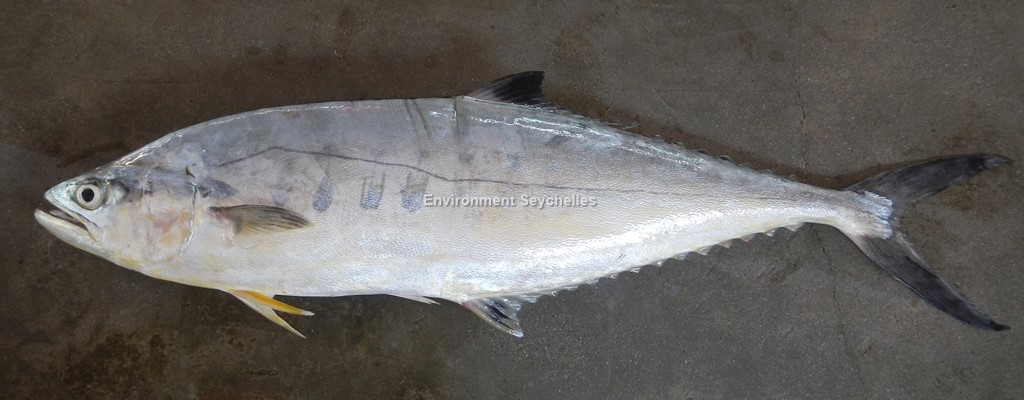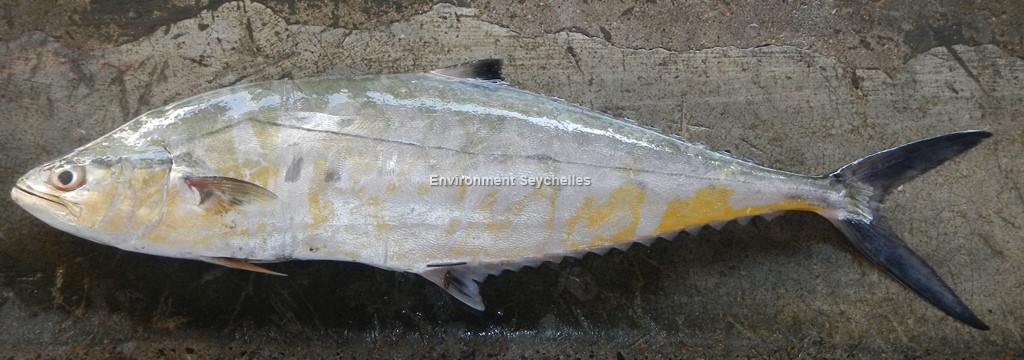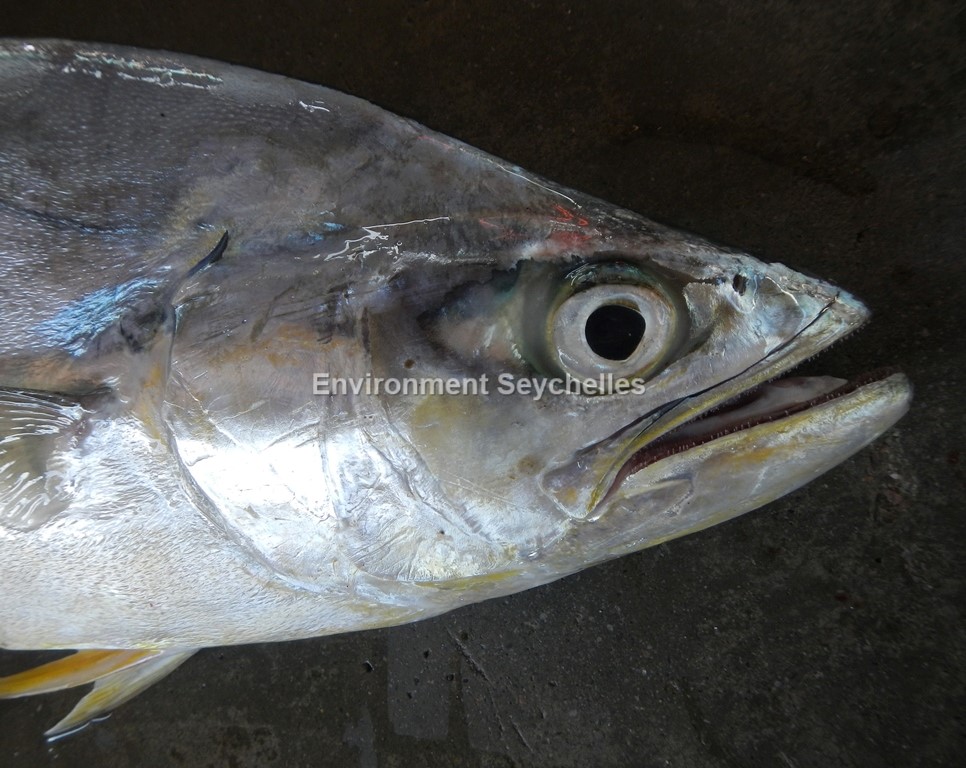Description:
Dorsal spines: 7-8; Dorsal rays: 19-21; Anal spines: 3; Anal rays: 17-19.
Body elongate, oblong to elliptical and strongly laterally compressed. Dorsal and ventral profiles near equally curved. Snout pointed with dorsal profile of head and nape
slightly concave. Upper jaw extends to posterior margin of eye in adults. Lower jaw with 2 rows of teeth, adults with teeth in inner row equal in size to those in outer
row. Posterior soft dorsal and anal fin rays consisting of semidetached finlets. Pelvic fins subequal to pectoral fins. Lateral line slightly irregular, moderately convex
above pectoral fin and straight posteriorly.
Colour. Grey-green dorsally shading to silvery white ventrally. Adults with a double series of 6 to 8 dusky blotches above and below lateral line. Dark patch on outer rays
of second dorsal fin and often a round dark blotch on anal fin rays. In Seychelles often observed to have a yellowish ventral colouring including to the pelvic fins.
Size:
Maturity: Lm unknown. Range unknown. Max Length: 110cm TL. Commonly to 60cm TL.
Habitat and Ecology:
A coastal species that inhabits a variety of areas including shallow lagoons, seaward reefs and neritic waters over various substrates (depth 0-100m). Adults in clear
lagoon and seaward reefs, juveniles in shallow inshore and brackish waters. Occurs singly or in small schools. Feeds mostly on small bony fishes and crustaceans.
Juveniles reported to use their specialised rasping teeth to feed on the scales and epidermal tissues of other fish.
Fishery Status:
This species is not protected or subject to fishery regulations. It is caught in the hand line and various net fisheries. It is an occasional and not numerous component
of the catch.
Notes:
Spines of the first dorsal and anal fins are venomous and capable of inflicting painful stings.
References:
Bray, D.J. (2017). Scomberoides lysan in Fishes of Australia, http://fishesofaustralia.net.au/home/species/4282 (02/06/19)
Fischer, W. & G. Bianchi (eds), (1984). FAO species identification sheets for fishery purposes. Western Indian Ocean; (Fishing Area 51). Prepared and printed with the
support of the Danish International Development Agency (DANIDA). Rome, Food and Agricultural Organization of the United Nations, vols 1-6.
Froese, R. & D. Pauly. Eds. (2019). FishBase. https://www.fishbase.se/summary/1951 (02/06/19).
Smith-Vaniz, W.F. & Williams, I. (2016). Scomberoides lysan (2017 errata version). The IUCN Red List 2016: http://dx.doi.org/10.2305/IUCN.UK.2016-3.RLTS.T20434766A46664119.en. (02/06/19).
Citation:
Nevill, J.E.G. (2019). Scomberoides lysan, Doublespotted queenfish. Seychelles Seatizens. www.seatizens.sc. https://seatizens.sc/species/scomberoides-lysan-forsskal-1775/ (edited 26/06/22).




Very neat article. Cool.
I really enjoy the blog article.Thanks Again. Really Cool.
Really enjoyed this blog.Thanks Again. Keep writing.
Thank you ever so for you post.Really looking forward to read more. Want more.
wow, awesome blog post.Thanks Again. Awesome.
Hey, thanks for the article.Really thank you! Really Great.
Hey, thanks for the article.Really looking forward to read more. Cool.
Thanks again for the blog article. Fantastic.
A round of applause for your article post.Really thank you! Awesome.
Thanks again for the post.Much thanks again. Keep writing.
A round of applause for your blog.Really looking forward to read more. Really Cool.
Very informative article.Really thank you!
I value the blog.Thanks Again. Fantastic.
Enjoyed every bit of your article post.Much thanks again. Will read on…
Really appreciate you sharing this article post.Really looking forward to read more. Great.
This is one awesome post.Thanks Again.
I really liked your article post.Really thank you! Fantastic.
I truly appreciate this blog article.Really thank you! Fantastic.
Really informative article.Really looking forward to read more. Will read on…
Wow, great blog post. Really Cool.